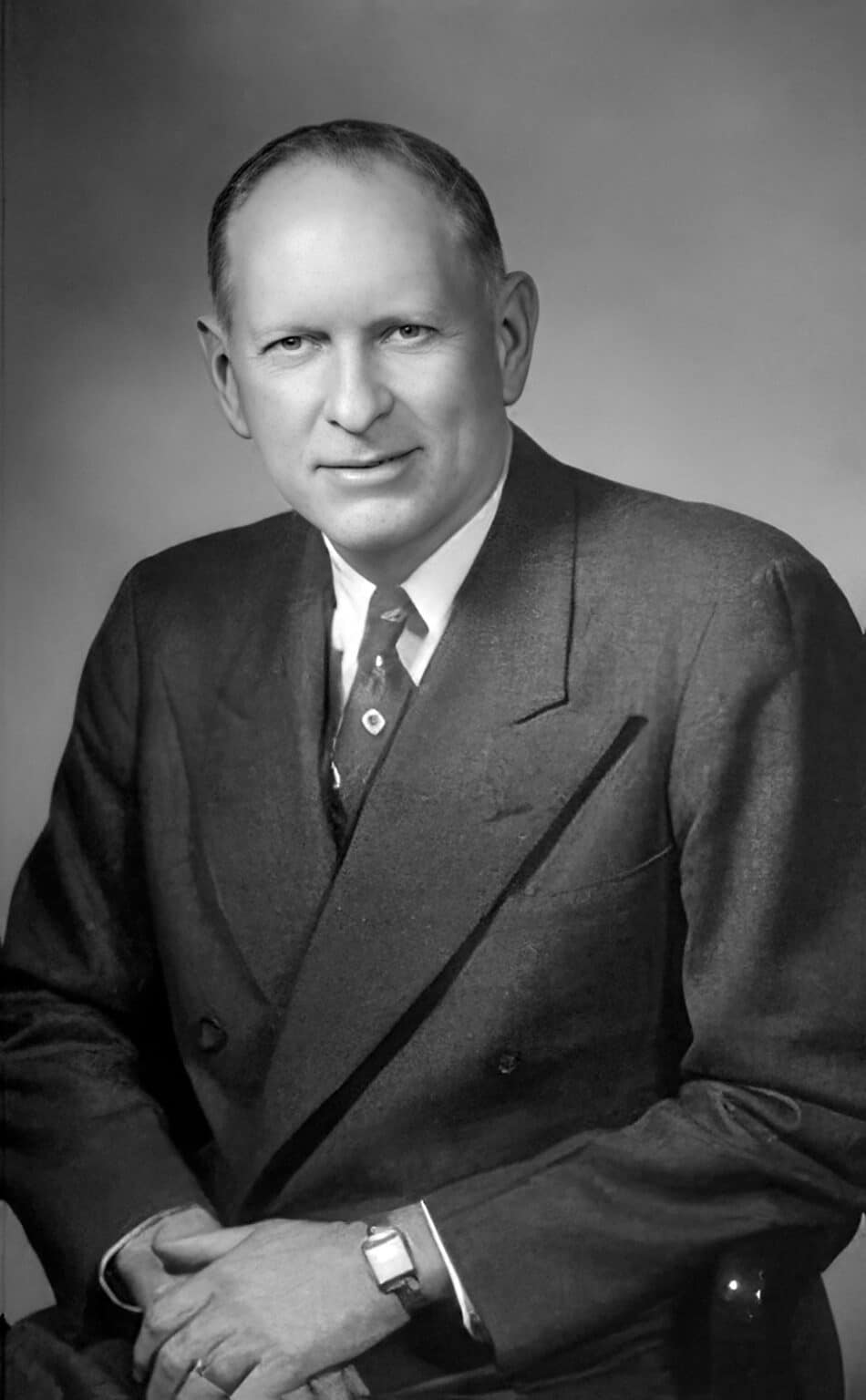RESOURCES
PEOPLE
Gov. Thomas Bahnson Stanley
1890-1970
Thomas Stanley was a Virginia businessman, congressman, and the 57th Governor of Virginia, serving from 1954 to 1958. Born in Henry County, he rose from modest beginnings to become the president of Stanley Furniture Company, one of the state’s largest manufacturers. Stanley’s business success gave him a strong foundation in the conservative, pro-business politics of mid-20th-century Virginia, and he became a loyal member of the powerful Byrd Organization, the political machine led by U.S. Senator Harry F. Byrd Sr. He began his political career in the Virginia House of Delegates in 1930, serving until 1946, followed by five terms in the U.S. House of Representatives. He left Congress to run for governor, where his term would be defined not by economic development or infrastructure growth, but by his central role in the state’s resistance to public school desegregation.
Stanley took office just months before the Supreme Court’s 1954 decision in Brown v. Board of Education, which declared racial segregation in public schools unconstitutional. The ruling immediately presented a crisis for Virginia’s political establishment, which was determined to preserve segregation. Stanley’s initial response to the decision was relatively cautious. He appointed the Gray Commission, chaired by State Senator Garland Gray, to study the issue and propose a path forward. The commission recommended a plan that included pupil placement controls and tuition grants, but stopped short of advocating for full defiance of the federal courts. However, as white resistance grew and political pressure mounted, Stanley distanced himself from the Gray Commission’s moderate recommendations.
In 1956, Governor Stanley convened a special session of the Virginia General Assembly and introduced a more aggressive set of segregationist policies that became known as the Stanley Plan. This plan authorized the governor to close any public school that desegregated, cut off state funds to those schools, and provided tuition grants for white students to attend private, segregated academies. It also centralized pupil placement decisions in a way designed to slow or prevent integration, using administrative discretion to maintain the status quo of racial separation. The Stanley Plan was the legislative centerpiece of Virginia’s Massive Resistance strategy, and Stanley became one of its chief enforcers.
The impact of the Stanley Plan was immediate and severe. As federal courts began ordering integration in specific districts, school boards faced a stark choice: integrate and lose state support, or shut down entirely. In several districts, schools were closed rather than integrated, most notoriously in Prince Edward County, where public schools remained shut for five years, leaving Black students without formal education. White students, meanwhile, were offered publicly funded tuition grants to attend hastily created private segregation academies. This state-sponsored dual system deepened racial inequalities and deprived a generation of Black Virginians of basic educational opportunity.
The Stanley Plan ultimately failed in the courts. In January 1959, a year after Stanley left office, both the Virginia Supreme Court and a federal district court ruled that the key elements of the plan were unconstitutional. These rulings forced Virginia to begin dismantling its system of Massive Resistance, though full compliance with federal desegregation mandates would take years more and often came only through continued court intervention and grassroots activism.
Stanley’s broader record as governor included modest economic development and infrastructure initiatives, including investments in highways and industry, but these accomplishments were eclipsed by his leadership in the state’s campaign against civil rights. His tenure is remembered as a pivotal period in Virginia’s struggle with desegregation, during which he chose political loyalty and white public opinion over moral and constitutional leadership.
